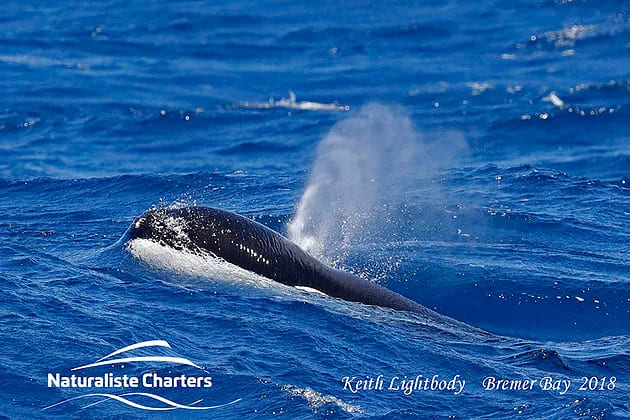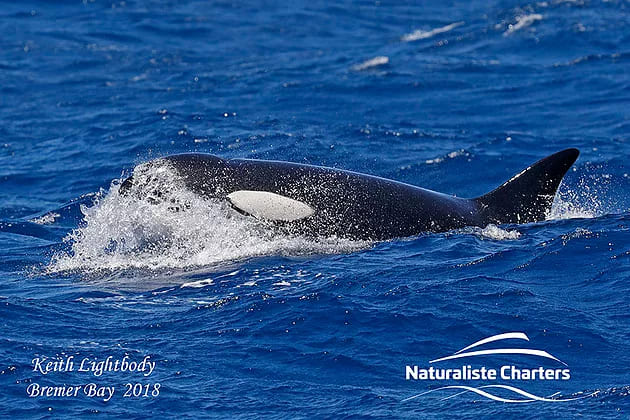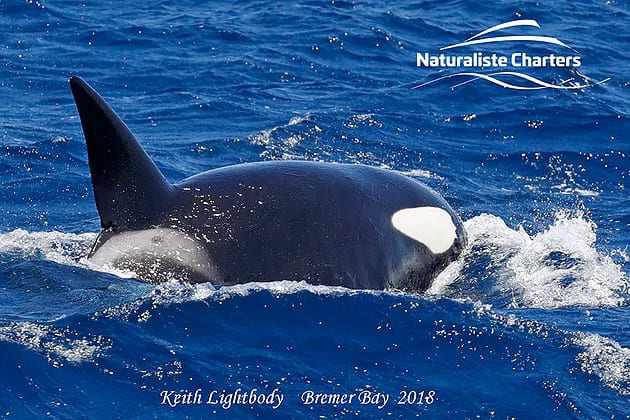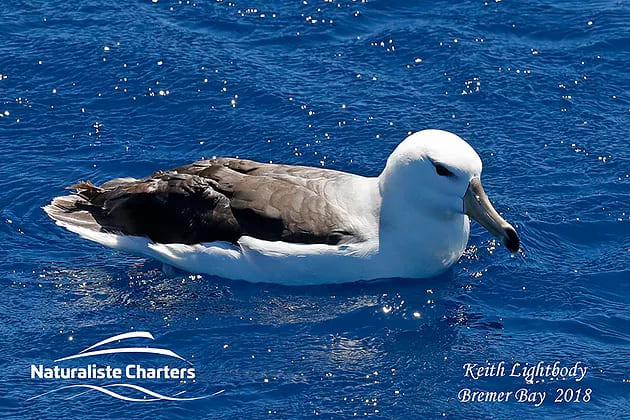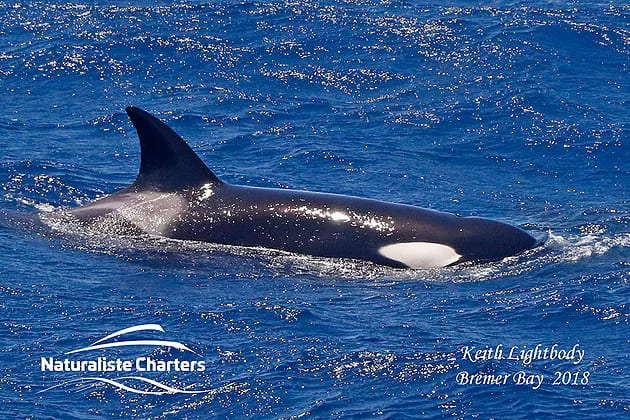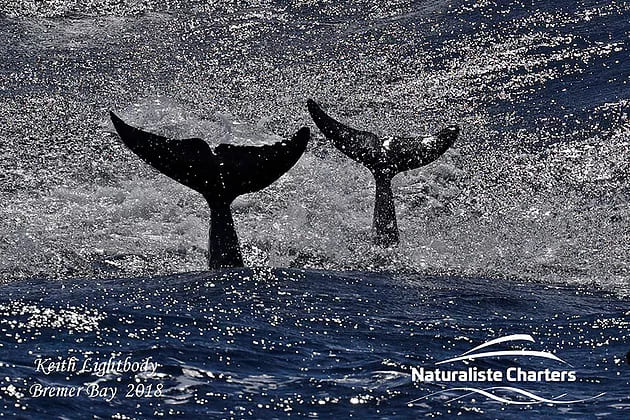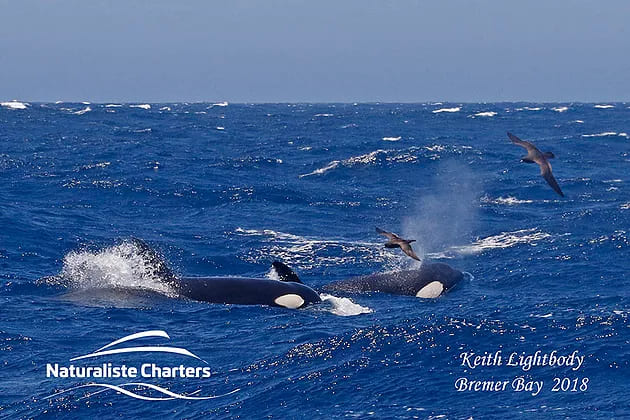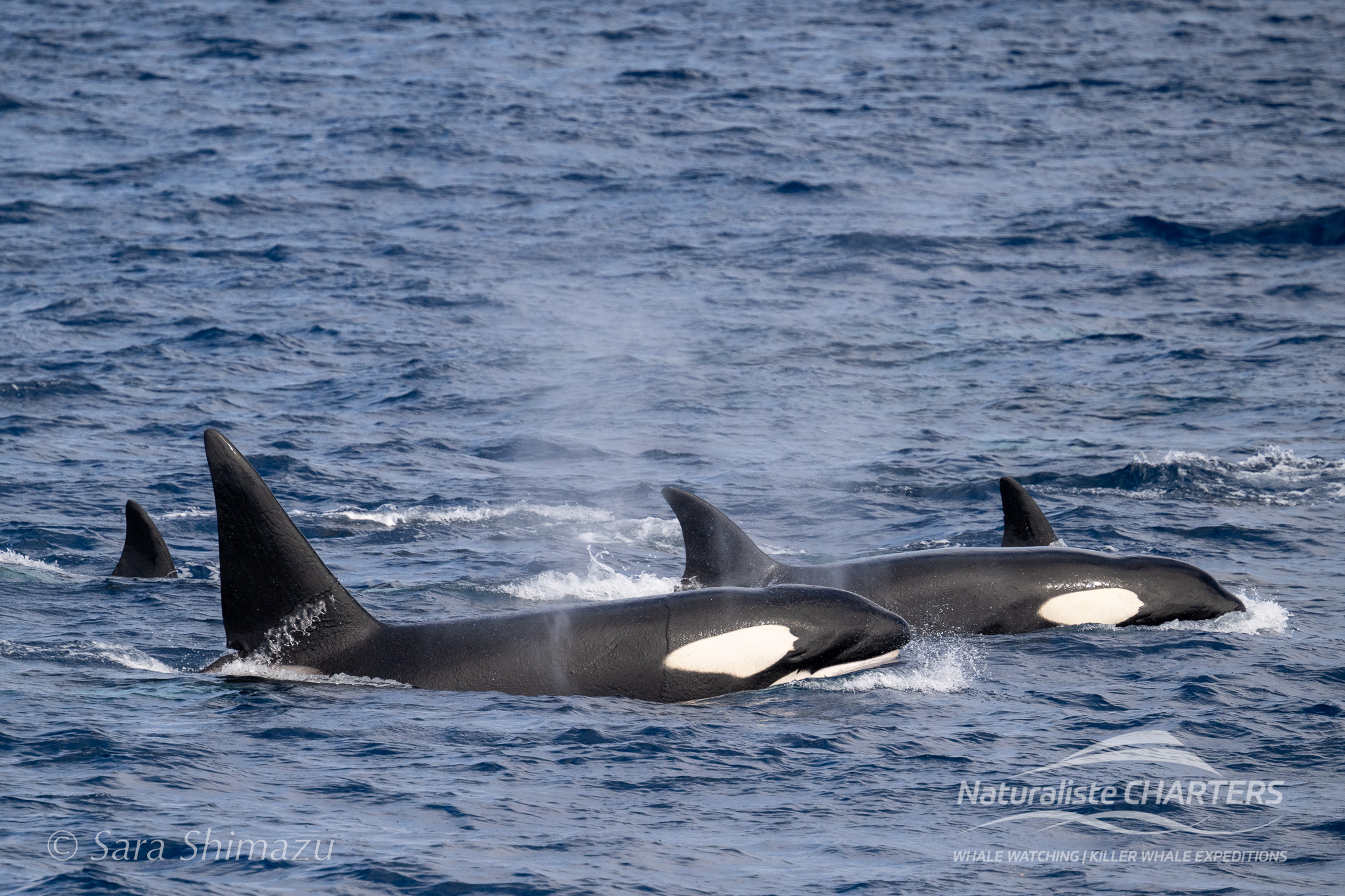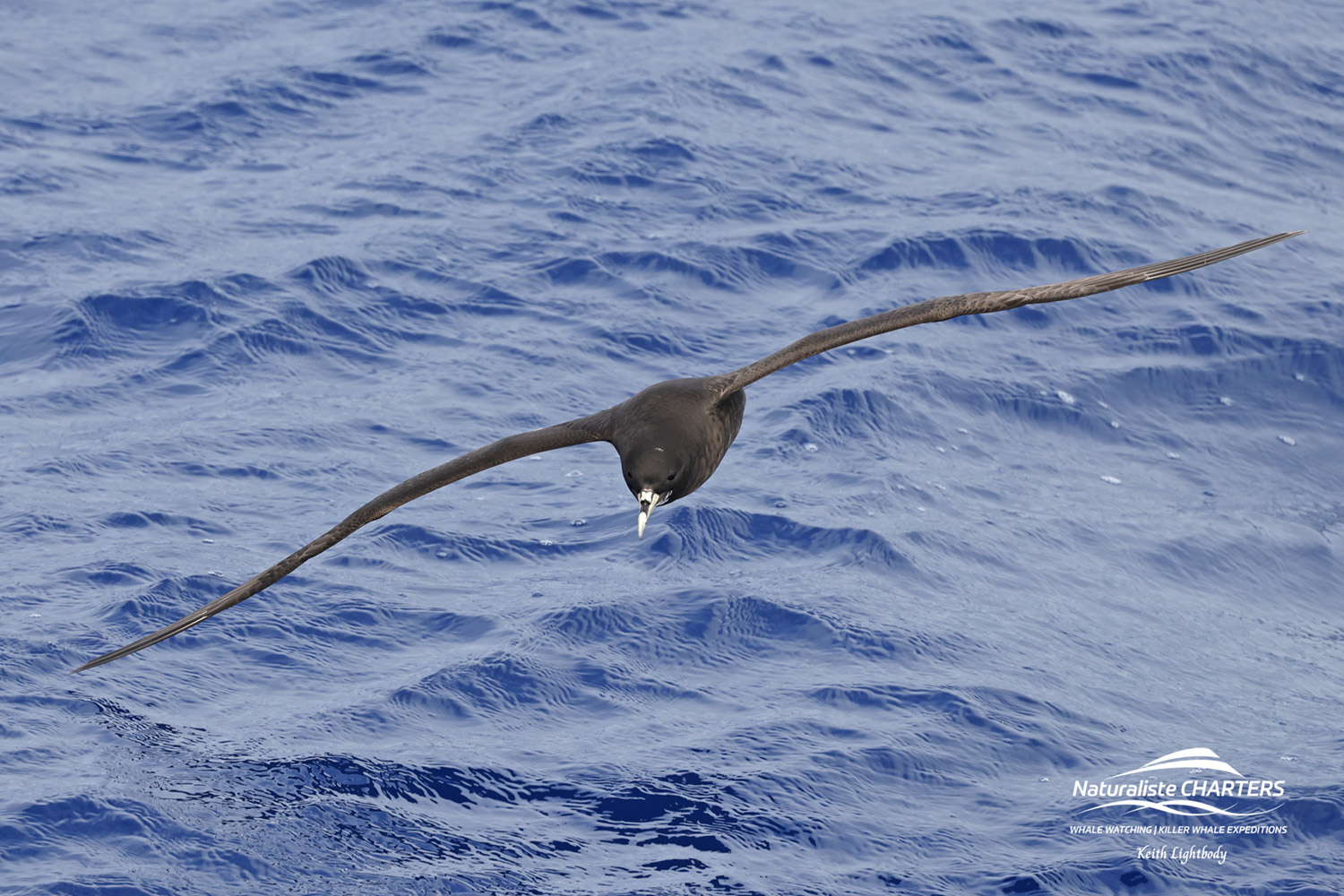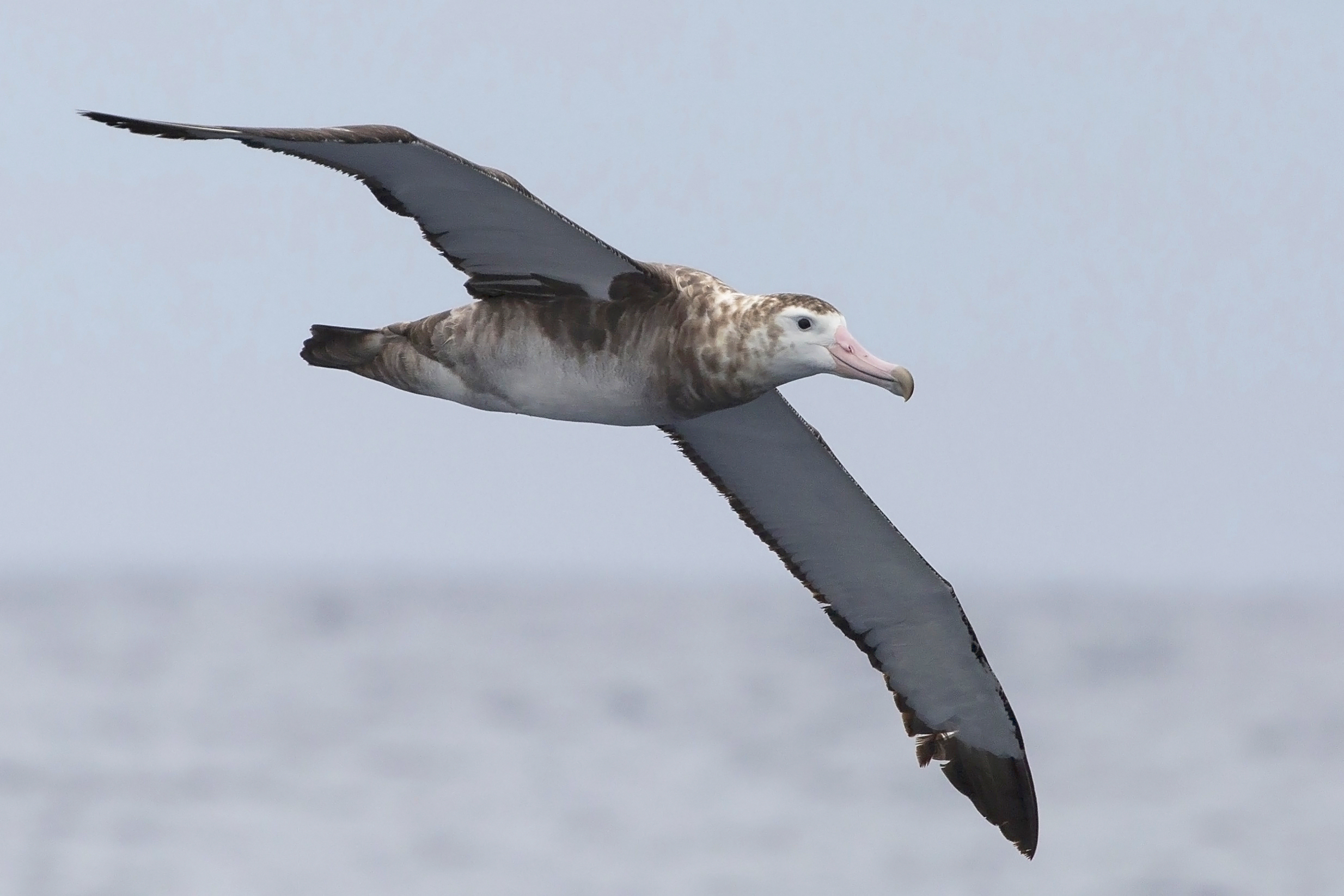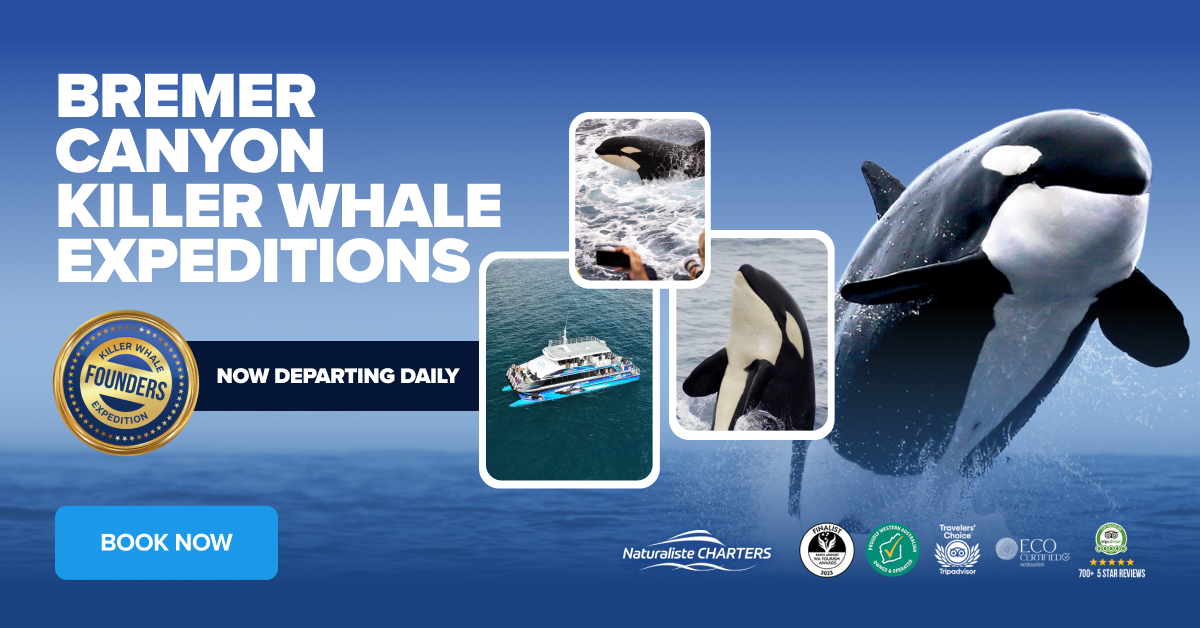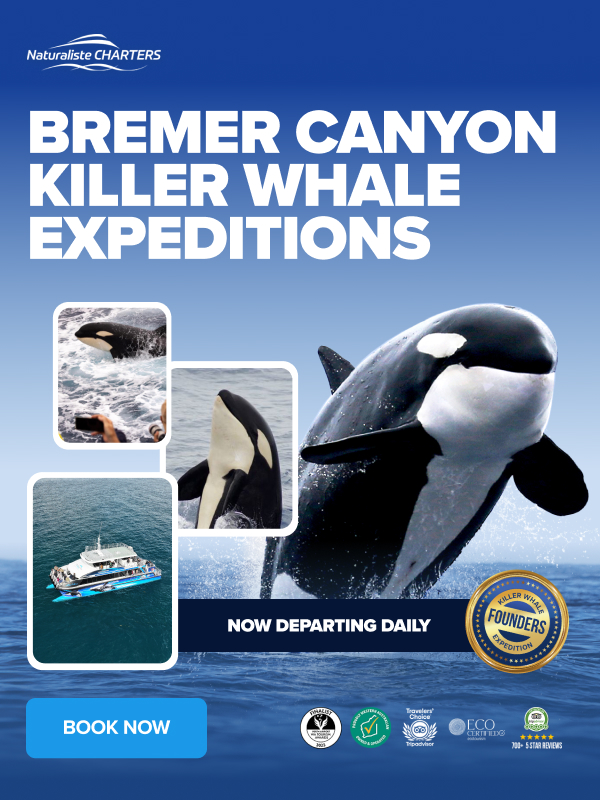THIS BLOG HAS BEEN SET TO NONDEX AS IT LOADS VERY SLOWLY
The Bremer Canyon was nothing short of spectacular today. The sun was out, and the wind and swell were up. We welcomed many expeditioners from the previous day who had not seen orca. The pressure was on!
After a 2 hour steam, we arrived at our blue office. We were instantly excited to see large numbers of birds, pointing out the different species we were seeing. Even more excitingly, almost immediately, we sighted the orca. For us crew, it was like seeing old friends, as the pod were animals we have seen every year at the canyon.
They were very active, moving swiftly, often in a line abreast formation, surging from the swells in unison, a behaviour we have learned to associate with hunting. An orca surging from the face of a wave, trailing a cascade of sparkling seawater is a spectacular sight as they rocket through the southern ocean.
As with all things in nature, this behaviour is not practiced without reason. It is a very energy efficient method of travelling fast for long distances. The forward motion of the surging wave provides both forward propulsion and also resistance for the opposing orientation of the thrusting flukes. Dolphins leaping “playfully” are another example of using this forward motion to breathe while travelling fast. The orca gave us many demonstrations of this, followed by a period of the tight dives made during hunting and feeding. We saw no other evidence of their success on the surface, and we left them to continue our traverse of the southern ocean. We had spotted another pod in the distance, and set a course in their direction.
This pod was also travelling with purpose, so we kept pace at a distance. Our passengers, now seasoned orca spotters, called out their own sightings of females and juveniles, as well as spotting differences in fin shapes and sizes as the animals surfaced. Abruptly, the pod changed tack, and headed in our direction. Females and juveniles rocked in, skimming just below the surface, white markings glowing aqua just beneath the surface from all points of the compass. It was difficult to know where to look, which is a rather nice problem to be faced with! There is no better way to get an idea of the sheer size of a killer whale than to have one skim slowly past just beneath the surface, not a metre below your feet, as our expeditioners on the bow experienced many times today.
The afternoon began with a passing sighting of a large, lone sunfish, followed by a sighting of another orca pod. This pod were travelling swiftly and kept their distance. The time to return to port had come, so we left them to their purposeful traverse of the southern ocean, and turned for home.
Passengers settled in with afternoon tea, enjoying their photos and discussing highlights of the day, while we crew kept an eye on ocean. Our trek home was interupted by the sight of a large swirl of birds silhouetted against the sun. If something on the surface is of interest to the birds, its of interest to us. We detoured to investigate. What followed was some of the most stunning aerobatic displays we have seen at the canyon.
A pod of around 400 bottlenose dolphins were feeding. The familiar rapid fire of camera shutters filled the air as some of our expeditioners took on the challenging task of photographing the lightning fast leaps. Tracking a darting dolphin with a lens is no easy task, but throw in a good sized swell and a stiff breeze in the southern ocean, and suddenly the difficult seems almost impossible. As you will see from our photos though, it can be done! Several of our passengers captured some amazing shots, so stay tuned and prapare to be awed!
The dolphins surrounded us, surging from swells, launching high in the air in all directions. We could hear the squeaks and whistles of their communication from the deck clearly, no need for a hydrophone today! A single dolphin rocketed from a wave crest directly in front of our vessel in a stunning arc that took it to eye level on our bridge, some six meters above the swell, a spectacular finale to an amazing day on the ocean. We encountered a small pod of common dolphin, and stopped as always at Glasse Island, where a colony of Australian Sealions, the rarest sealion on earth and many seabirds make their home. Adding to our passengers species count. No day is ever the same at the Bremer Canyon, but every day is amazing. What will we see tomorrow?
Until tomorrow,
The Bremer Canyon Cre

